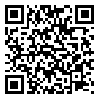Volume 13, Issue 1 (3-2023)
J Health Saf Work 2023, 13(1): 90-108 |
Back to browse issues page
Download citation:
BibTeX | RIS | EndNote | Medlars | ProCite | Reference Manager | RefWorks
Send citation to:



BibTeX | RIS | EndNote | Medlars | ProCite | Reference Manager | RefWorks
Send citation to:
Khajehnasiri F, Zaroushani V, Babaei Haris Z. Fire Risk Analysis in a Student Dormitory Using Fire Risk Index Method for Multistorey Apartment Buildings in 2021: A Case Study. J Health Saf Work 2023; 13 (1) :90-108
URL: http://jhsw.tums.ac.ir/article-1-6805-en.html
URL: http://jhsw.tums.ac.ir/article-1-6805-en.html
1- Department of Community Medicine, Faculty of Medicine, Tehran University of Medical Sciences, Tehran, Iran
2- Social Determinants of Health Research Center, Research Institute for Prevention of Non-Communicable Disease, Department of Occupational Health Engineering, Faculty of Health, Qazvin University of Medical Sciences, Qazvin, Iran ,v.zaroushani@qums.ac.ir
3- Department of Occupational Health and Safety Engineering, Student Research Committee, Faculty of Health, Qazvin University of Medical Sciences, Qazvin, Iran
2- Social Determinants of Health Research Center, Research Institute for Prevention of Non-Communicable Disease, Department of Occupational Health Engineering, Faculty of Health, Qazvin University of Medical Sciences, Qazvin, Iran ,
3- Department of Occupational Health and Safety Engineering, Student Research Committee, Faculty of Health, Qazvin University of Medical Sciences, Qazvin, Iran
Abstract: (1306 Views)
Introduction: This study quantitatively analyzed the fire risk using the Fire Risk Index Method: Multistorey Apartment Buildings (FRIM-MAB) method, considering the importance of fire safety in student dormitories as human gathering centers and previous limited studies.
Material and Methods: This descriptive-analytical study was conducted on 17 sections of the Qazvin University of Medical Sciences student dormitory in 2021. This study used the FRIM-MAB version 2.1. In this method, 17 parameters and their sub-parameters affecting the fire risk index were determined and weighted. Consequently, the studied dormitory was also inspected, the weighted degree of each parameter was computed, and the fire risk index for each section, which ranged between 1 and 5, was determined.
Results: The average fire risk index of the dormitory building at the time of the study was 2.37. The laundry room received the lowest risk index (1.69), while the computer site received the highest risk index (2.7). The results indicated that the most effective parameters causing fire risk were related to “compartmentation” (12 frequency items), “linings in the apartment” (4 frequency items), and “escape routes” (1 frequency item). These parameters contributed more than 42% to create the risk index for the dormitory’s most dangerous areas.
Conclusion: The FRIM-MAB method is a suitable quantitative and indexing fire risk assessment method for student dormitory buildings, and it is a quick, inexpensive, and effective screening and ranking tool. Periodically evaluating the dormitory’s fire risk and, if necessary, improving the environment is essential. In the present study, compartmentation, linings in the apartment, and escape routes were the most effective parameters in fire risk of the studied dormitory.
Material and Methods: This descriptive-analytical study was conducted on 17 sections of the Qazvin University of Medical Sciences student dormitory in 2021. This study used the FRIM-MAB version 2.1. In this method, 17 parameters and their sub-parameters affecting the fire risk index were determined and weighted. Consequently, the studied dormitory was also inspected, the weighted degree of each parameter was computed, and the fire risk index for each section, which ranged between 1 and 5, was determined.
Results: The average fire risk index of the dormitory building at the time of the study was 2.37. The laundry room received the lowest risk index (1.69), while the computer site received the highest risk index (2.7). The results indicated that the most effective parameters causing fire risk were related to “compartmentation” (12 frequency items), “linings in the apartment” (4 frequency items), and “escape routes” (1 frequency item). These parameters contributed more than 42% to create the risk index for the dormitory’s most dangerous areas.
Conclusion: The FRIM-MAB method is a suitable quantitative and indexing fire risk assessment method for student dormitory buildings, and it is a quick, inexpensive, and effective screening and ranking tool. Periodically evaluating the dormitory’s fire risk and, if necessary, improving the environment is essential. In the present study, compartmentation, linings in the apartment, and escape routes were the most effective parameters in fire risk of the studied dormitory.
Type of Study: Research |
Received: 2023/03/13 | Accepted: 2023/03/30 | Published: 2023/03/30
Received: 2023/03/13 | Accepted: 2023/03/30 | Published: 2023/03/30
Send email to the article author
| Rights and permissions | |
 |
This work is licensed under a Creative Commons Attribution-NonCommercial 4.0 International License. |






